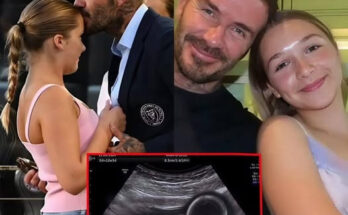It was the summer of 1989, when the annual Easton County Fair was in full swing—bright lights, spinning rides, the sweet smell of cotton candy filling the air. Among the families laughing and children darting between booths, one little girl disappeared.
Her name was Sarah Whitfield, just 5 years old. She had come to the fair with her parents, eager to ride the carousel and win a stuffed bear. But somewhere between the Ferris wheel and the food stalls, Sarah vanished. No scream was heard, no alarm was raised. By the time her parents realized she was missing, the fair was closing down and the music played on.
The gates remained open that night. People filtered out under the blinking neon, unaware that one family’s world had just shattered.
The Search That Led Nowhere
Authorities responded quickly at first. Flyers were printed, volunteers scoured the fairgrounds, and divers were sent into nearby ponds. Police questioned vendors and carnival workers, but no one remembered seeing Sarah after dusk. There were no witnesses, no ransom notes, and no trace of her belongings.
Despite weeks of searching, the case grew cold. As months turned to years, her smiling face remained on missing posters around Easton—a haunting reminder of the little girl who had disappeared without a trace.
The Whitfield family never recovered. Sarah’s mother, Ruth, would often sit on the porch waiting for her daughter to come home, while her father withdrew into silence. The case was eventually shelved, marked “unsolved,” and Easton returned to its quiet routine.

Two Decades of Silence
For 20 years, Sarah’s name faded from headlines, surviving only in whispers and local lore. Some claimed she had been taken by traveling carnival workers; others suggested a more sinister, local hand. Still, no evidence surfaced to support any theory.
Then, in 2009, everything changed.
A Backyard Discovery
It was a chilly autumn afternoon when investigators returned to Easton, reopening the cold case with modern forensic tools. Acting on a tip, they brought K-9 units to a quiet street at the edge of town. The dogs sniffed through overgrown grass and abandoned sheds, circling behind a modest, weather-worn home that belonged to Eleanor Marsh, a reclusive woman in her seventies who had lived in Easton her entire life.
Suddenly, one of the dogs stopped behind the shed, pawing furiously at the earth. Officers marked the spot and began to dig. Only a few feet below the surface, wrapped in rotted cloth, lay an object no one expected to see—a child’s ragdoll.
The faded toy was fragile, its button eye missing, its dress torn. But investigators recognized it instantly. Photographs from 1989 showed Sarah clutching that very doll at the county fair on the night she vanished.
The discovery stunned the town. After two decades of silence, the past had clawed its way back to the surface.

A Dark Truth Resurfaces
But why was Sarah’s doll buried in the backyard of an elderly woman’s home? And more importantly—what else had Easton buried with it?
As detectives pressed neighbors for details, unsettling stories emerged. Eleanor Marsh had once worked as a seamstress at the county fair, sewing costumes for performers. She was known to be kind, but odd—often inviting children into her booth with promises of toys or candy. Few thought much of it at the time.
Yet when asked about Sarah, Eleanor grew evasive. She insisted she knew nothing of the girl, but couldn’t explain how Sarah’s doll ended up buried behind her shed.
The discovery forced investigators to confront the possibility that Sarah’s disappearance had never been random. Perhaps it was not the chaos of the fair, nor a drifter slipping through town, but something closer to home—something Easton had ignored in its eagerness to move on.
The Town That Didn’t Want to Remember
Easton had always been reluctant to reopen old wounds. The fair was its pride, a cherished tradition that drew crowds from across the county. To acknowledge that a child vanished there, perhaps at the hands of someone from within the community, would have meant tarnishing its image.
Over time, silence became easier than truth. The Whitfields’ pain was swallowed by the town’s desire to preserve its celebrations. Even the police, stretched thin and under pressure to keep Easton “safe,” let the case slip into the background.
But the doll, unearthed after 20 years, shattered that silence. It was more than a toy—it was evidence of negligence, of a community that chose denial over justice.

What Remains Unanswered
To this day, Sarah Whitfield’s body has never been found. No one has been charged in connection with her disappearance. The discovery of the doll opened new leads, but also raised new questions:
- Who buried it, and why?
- Was it a trophy, a cruel reminder kept by someone who knew what happened?
- Or was it placed there to mislead investigators?
For the Whitfield family, the discovery brought no closure—only renewed grief. “Finding her doll was like losing her all over again,” her mother said in a rare statement.
A Memory That Won’t Stay Buried
The story of Sarah’s disappearance is no longer just about a missing child. It is about a town’s failure to protect its own, and its reluctance to face the darkness hidden in plain sight.
The doll, fragile and faded, sits now in an evidence locker, a silent witness to what Easton tried to bury. It serves as a reminder that truth cannot stay hidden forever, and that justice delayed is not justice denied.
Thirty-four years after Sarah vanished, the county fair still takes place every summer. The lights shine, the music plays, and children laugh on the rides. But for those who remember 1989, the sound of a carousel carries with it a chilling echo—the absence of one little girl who never made it home.
And somewhere, deep in Easton’s history, the soil still holds secrets yet to be uncovered.


